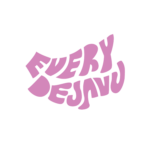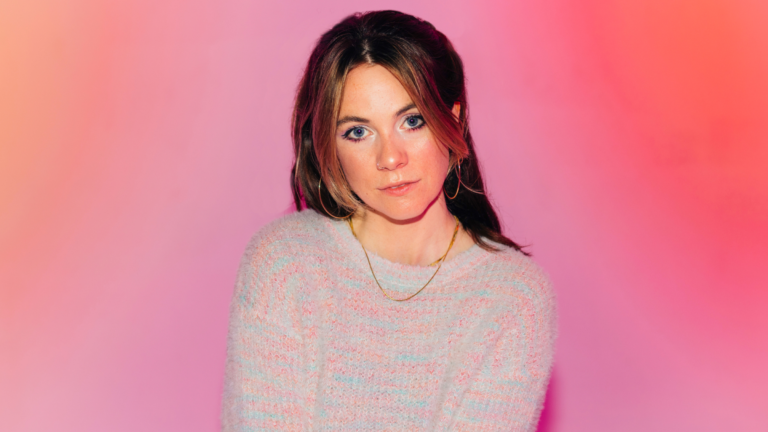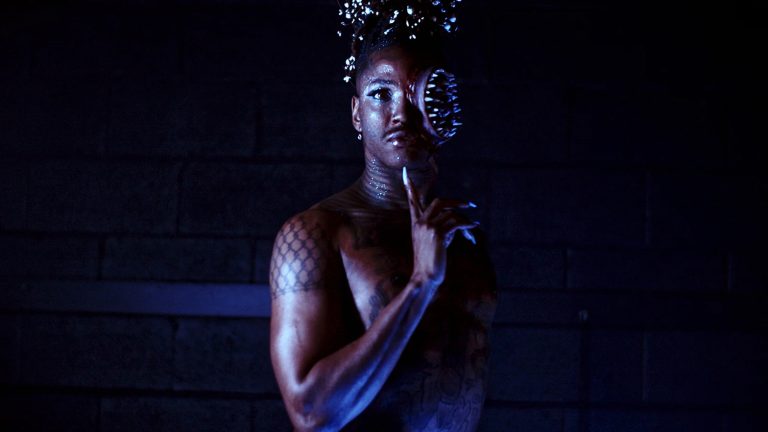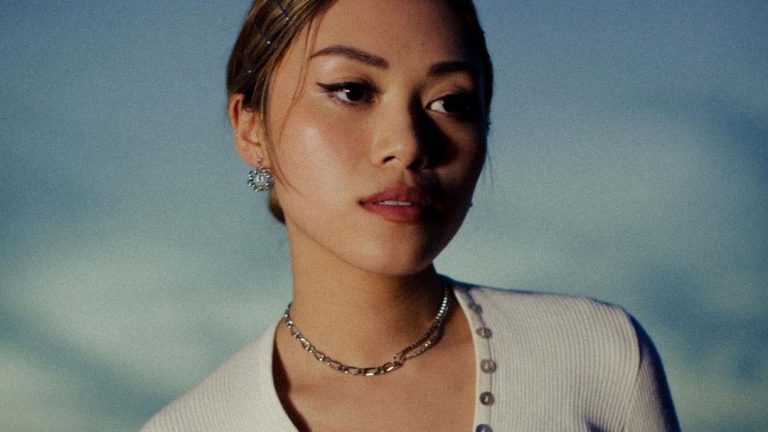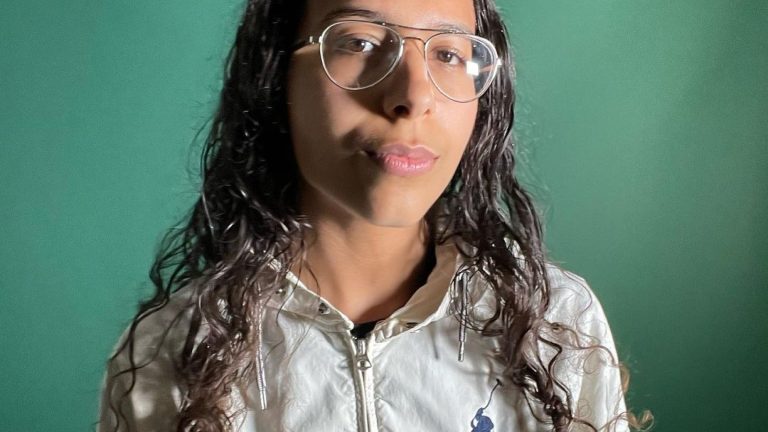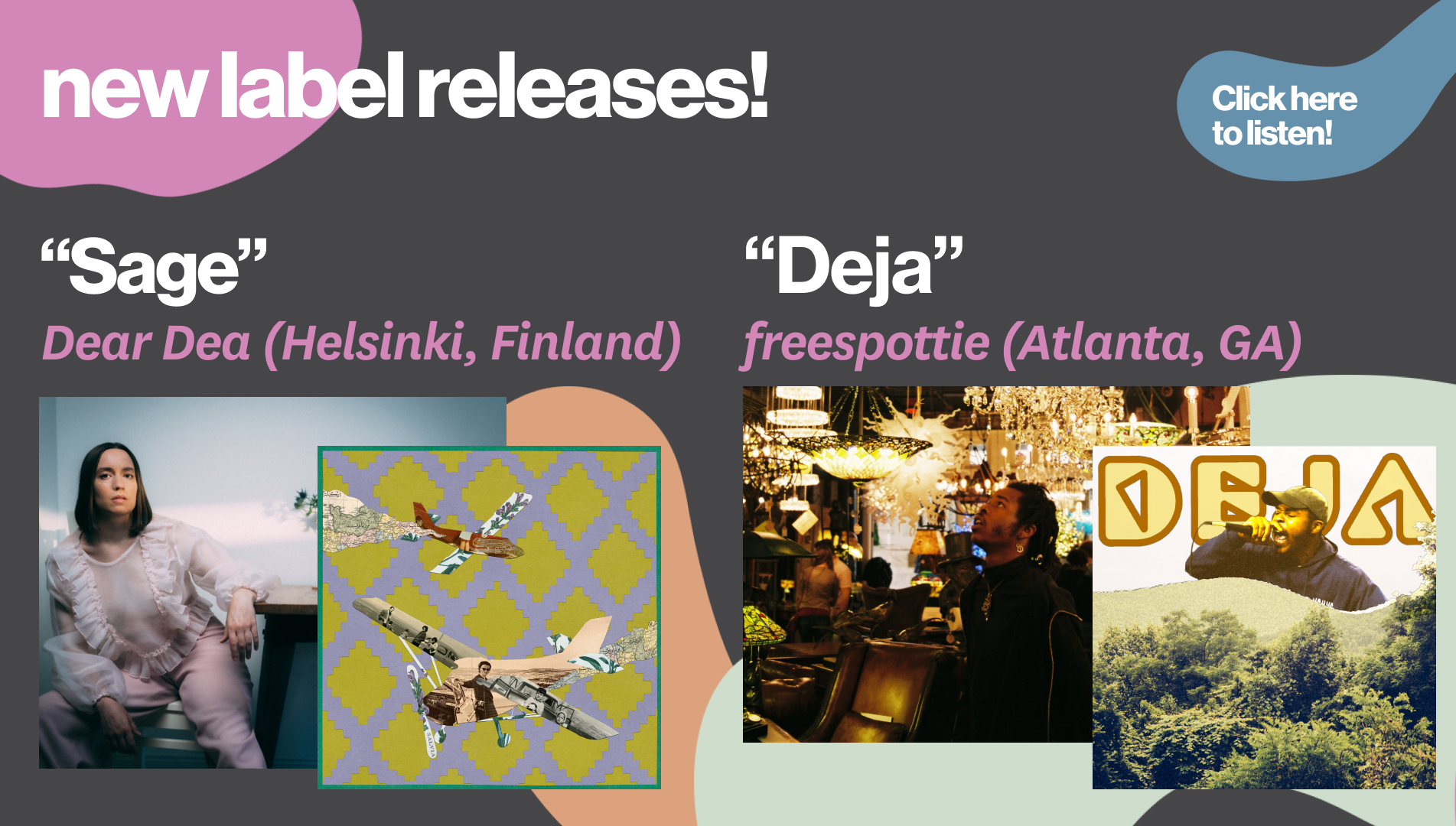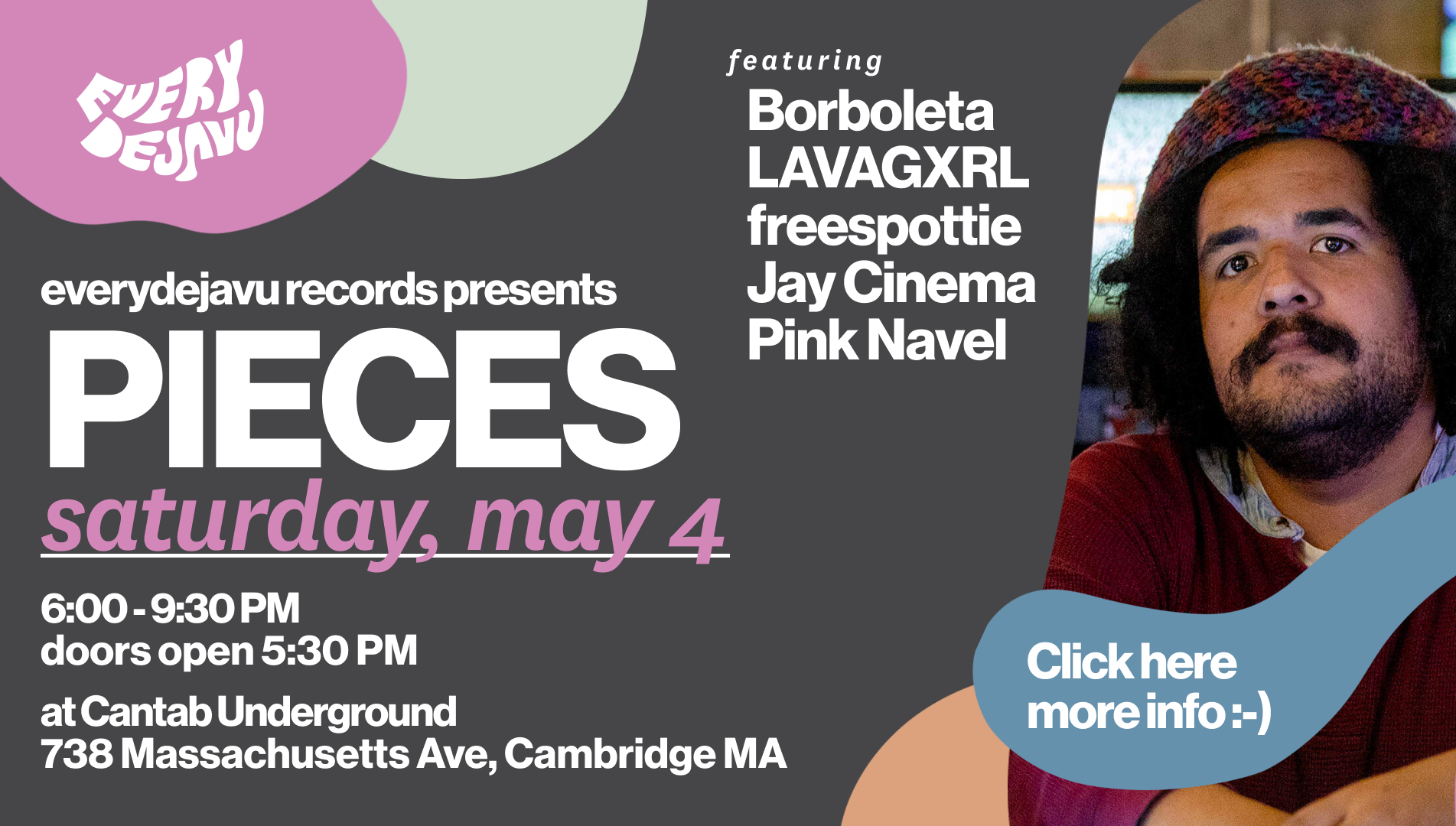High-energy music is all well and good, especially if you’re looking to dance, but a more low-profile yet still rich sound can be just as appealing for a fun time. And that’s something that Bad Snacks, who you may be familiar with from when she went viral on Andrew Huang’s “4 Producers” challenge in 2019, is creating. A producer and multi-instrumentalist, Bad Snacks is all in on producing and making gorgeous electronic music, featuring everything from her own synthesized violin playing to “driving basslines, and hard-hitting grooves.”
Originally from Boston and now based in Los Angeles, Bad Snacks first played the violin at the age of 3 and comes from a background filled with Celtic folk and classical music. Her love of music has led to a mixed background as a violinist, producer, and musical educator, including time spent as an assistant professor at Berklee College of Music for Electronic Production & Design. Bad Snacks would eventually develop a more concrete musical identity in the electronic space once she immersed herself into the LA underground music scene where she would pull influences from a range of different music genres including jazz, hip-hop, and electronica. She’s appeared on well-known stages including Red Rocks Amphitheatre in Colorado, The Ogden Theatre in Denver, and El Rey in LA alongside other artists including Late Night Radio and Anomalie.
In the last few years, Bad Snacks has released three beat tapes—including 2018’s otherworldly Neat Tape 1 and 2020’s soothing Bathtub Bumps—all informed by her many musical influences and a love for house and dance music. Her most recent EP though, Home Music, is taking things a little further with a new sound that Bad Snacks has dubbed “comfortable house,” where her synthesized electric violin and very vibey textures come together for a lowkey sound.
Before the release of Home Music, Bad Snacks sat with EveryDejaVu over Zoom to talk about her new sound, how her mixed musical background has influenced her over time, and what she hopes to bring to the table for dance music.
So, you self-describe your new sound as “comfortable house,” an alternative to more traditional house music. What, if anything, served as the spark or initial inspiration for this new sound, especially for your upcoming EP?
It kind of started as a little joke on my Discord. During the pandemic, I used to stream on Twitch a lot; just making beats on Twitch. I’ve kind of created, or not created, but curated a pretty great little community online via Discord and Twitch. I’ve always really loved house and dance music. Part of my ethos as a producer is I’m always experimenting with different subgenres of electronic music.
I’ve been doing hip-hop-centric or hip-hop-adjacent music for a really long time. I have a love of house music, but I’m also not a super hype-y person, like I’m a pretty chiller supreme, as my friends might say. And I used to make these tracks on Twitch! It was one of my Discord members who was like, “It’s not house music, it’s not quite house music, but it’s like home music.” I was like, “Oh, I love that.” I’ve never resonated with something so strongly. That’s how the term comfortable house came to be, it’s the home music thing.
You have a pretty mixed background as an artist, in music education, and in producing. Do you think your multifaceted background has influenced your sound at all?
Yeah, absolutely. I have a couple of little woo-woo phrases that I like to use with my students. One of them is that we are just a synthesis of the things we consume. We’re also always building evidence for the things that we are. Those are my two little woo-woo things for the day.
I think it was actually a point of personal contention for a really long time because I used to be a folk singer-songwriter. I’m from the Boston area, so Celtic folk and classical music are deep in my veins. I was finding dissonance between the type of music I listened to versus the type of music I made plus my skill sets. It’s just been this long project—or process, I should say—of finding how those sounds work together and then building evidence for them. Right now, I am building evidence of my love of dance music and my love of DJing. That’s what this chapter is really about. Whereas the last chapter was more [about] getting really good at hip-hop pocket, my love of hip hop, my love of jazz, and how to integrate an electric violin in that and using sound design with the electric violin so that I can even play violin in my live sets.
On the educator aspect too, it’s all been surprisingly synergistic because again—a lot of my ethos as a producer, as an artist—is the experimentation. I experiment the most when I’m teaching. I’ve had so many students in so many different sub-genres of generally electronic music. But I also get ambient folk singer-songwriters and people in indie rock bands doing shoegaze, and I even used to play bass in a punk rock band.
So it’s just having the vocabulary for these different styles of music. It’s been nothing but an asset, I think, and I used to not view it that way. I used to view it as this very confusing thing of what is my sound as an artist in an industry where we’re trying to narrow down, you know, what is the pitch, what is the sound, who does this sound like. I finally just stopped caring. I finally stopped caring because it was like, at the end of the day, it’s just me and this is the evidence that I’m bringing to the table that this is stuff that Bad Snacks does.
I’ve listened to quite a bit of your back catalog recently, but I’ve really been enjoying both “iiwannabe” and “alright, ok” in the lead-up to our talk. Regarding “iiwannabe,” you said you pulled inspiration from Brazilian rhythms and elements from Tokyo’s ambient music scene. Are these elements infused into the rest of Home Music? Or did you incorporate other elements as well?
It all finds a way to weave in, even in the small details. “iiwannabe” is the most in-your-face Brazilian rhythm-inspired, but other tracks use Brazilian percussion—like pandeiro typ, top-end percussions. When it comes to Tokyo’s ambient music scene too, that’s also textural choices. There’s a lot of that incorporated.
One thing I like to talk about, too, is how even though I’m a violinist, I actually take most of my soloing inspiration from saxophone players. There’s specifically one sax player named Uyama Hiroto, who used to work on Nujabes’s stuff. I think he is the most delicious player. He just makes these lines that feel so saccharine to me. I love making nods to that and I’ve been looking to his playing for actually quite a few projects because I keep going back to his lines. They’re just so gorgeous and they work really well on the violin and they work really well for my playing.
The third single from Home Music, “like you do,” is a collaboration with chromonicci. What was it like working on a song you both pulled from heavier experiences?
I would describe my collaboration with chromonicci as a dream. I really couldn’t imagine a better process for collaborating with somebody. I’ve also just been such a huge fan of his for a long time. We had been billed on the same show in Denver a while back, but our sets were around the same time, so we never actually got to connect-connect. We saw each other’s sets and then we kept in touch. [We] got on a couple of long phone calls and realized how much we had in common as artists.
I had been apprehensive about doing features for a long time because it’s new territory. There’s a lot of delicate navigating that needs to happen when you’re working with another artist. But for me, I am very guilty of being a control freak. I take a lot of pride in being a producer, especially a female producer, and I mix all my stuff. I’ve gotten pretty good at engineering, which I also take a lot of pride in because I’m self-taught.
I started writing the song during a pretty significant breakup. I just wrote the opening line and started sobbing and was, like, “Okay, this is good.” This is good for me. I wrote the first verse and then the chorus and I kind of stopped there for a little bit. Then I thought of chromonicci and it turns out that he was going through a very similar thing at the time in his personal life.
We both joke that we’re good at writing first verses, but not second verses. So I was like “Well, what if your first verse was my second.” He got the stems back to me so fast. It was unbelievable. Every single time he sent something back, it was like Christmas. As a control freak, I was apprehensive of sending my work away because when you do that, there’s a relinquishing of ownership, suddenly the song isn’t completely mine anymore. But then, what he gave back… I was like there’s nobody else I would rather share this song with. It was just like a down-the-line, down-the-middle collaboration. And I feel very spoiled because I don’t know if anything will ever be that smooth again.
You’ve said you sometimes struggle to connect with aspects of the culture that surrounds dance music. What do you hope your music can bring to the house music/dance music space—locally, internationally, or in a broader sense, through this cozier, comfier sound you’ve leaned into?
I think a lot of my music as vibing music, and a lot of the music that I like is vibing music. Don’t get me wrong, I love dancing and I love concerts. Sometimes I have a problem, like I’ve had stints of time because I live in Los Angeles, [where] I’ll be going to four or five shows a week. I mean, I love those arenas. So when I say that there are some things about rave culture and festival culture that I don’t necessarily resonate with, it’s mostly this kind of very hype-y attitude of like, this is the expectation that we’re here to rage, we’re here to go hard, we’re here to get fucked up.
I love the idea of creating spaces for people where it’s like, yeah, let’s dance, let’s have a good time, but also it’s friendly for people who are not trying to lose their minds and it’s also sober friendly in a way. I think both on a literal level but also on kind of an attitude level of just really enjoying the reality that’s around you.
I think rave culture has this amazing community—I don’t want to knock rave culture at all! But I think we have seen a rise in frat bro culture and people who are just, like, rolling on lord knows what. It’s hard for me to get comfortable in these situations because I feel a little bit on edge, there’s so much chaos going around. So the hope here with this chapter of music is a little bit of a calling card of who else here just likes to vibe, who wants to go and dance and enjoy the music and not scream into each other’s ears, rendering ourselves deaf—which, if that’s your thing, that’s great. But I’m just kind of looking for the people that go to these events because they love the music and they love dancing to the music.
What are you most looking forward to with the release of Home Music?
Oh, so many things, so many things. The project is a little bit of a trip because it’s very emotional in some moments and then it’s also so stupid and goofy in other moments, which I think is actually a good representation of me as a person.
I’ve already got to play a lot of these tracks live on tour now, and getting more and more into DJing has been so fun. Honestly, this project has been my gateway into DJing more. I’m just learning so much all the time. I think the thing I’m looking forward to is being more in these party environments. My biggest hope is that I can find the people who resonate with that sentiment the most—that’s exactly the vibe I would love to curate in these shows I’m doing; we’re here for the music, we’re here to have a good time. There’s only so much that one person can do about curating safe spaces, but at the same time, I would love to create a world where there’s a little bit of an alternative.
We’re [also] releasing the first installment of the Home Music series—a home music party. We got access to this beautiful downtown LA loft, invited a handful of friends, and I DJed the night. It’s just this comfy like slumber party type of vibe. We’re hoping to turn it into a series and, hopefully, a traveling series too. That’s also something that I’m looking forward to.
